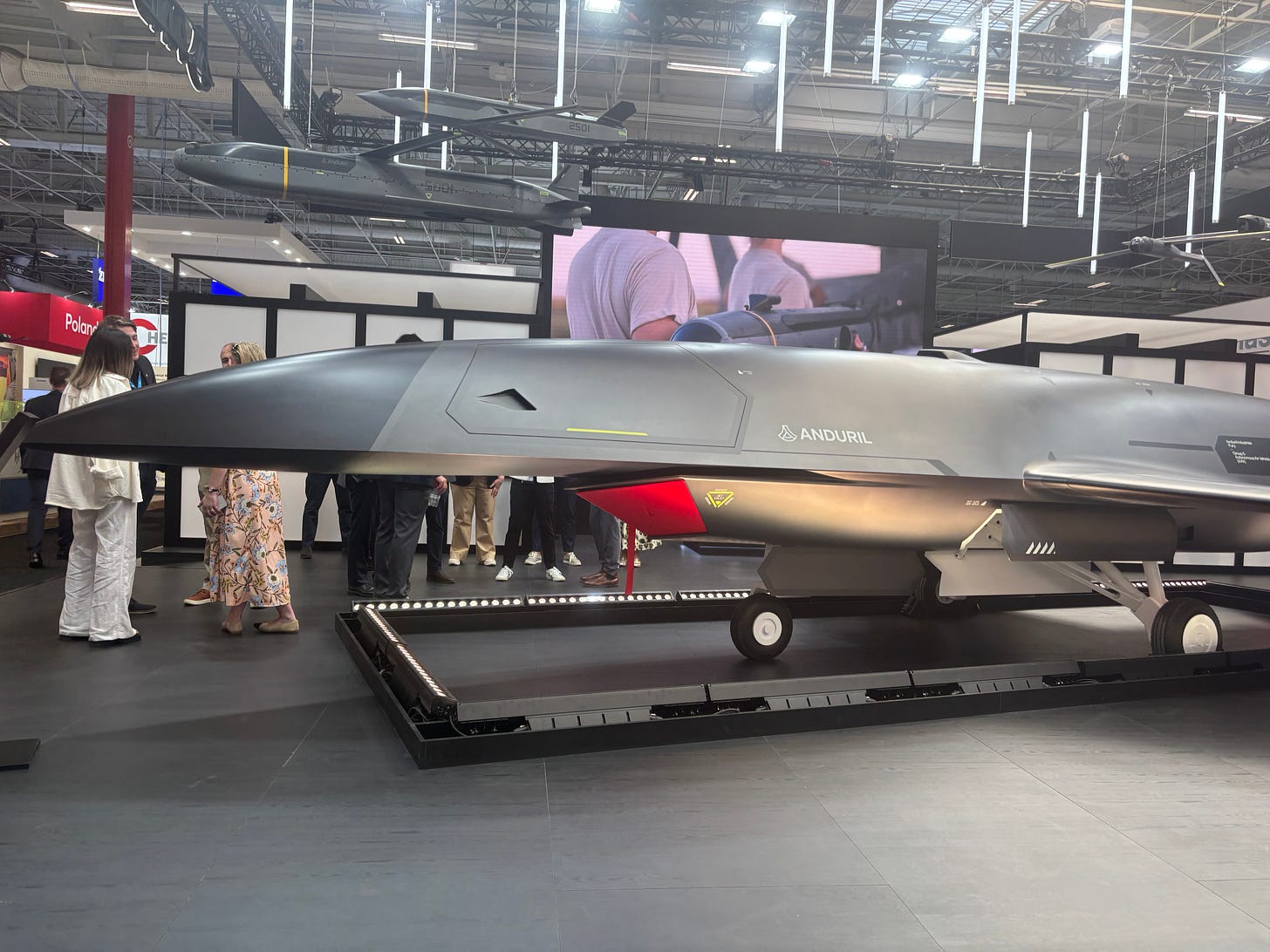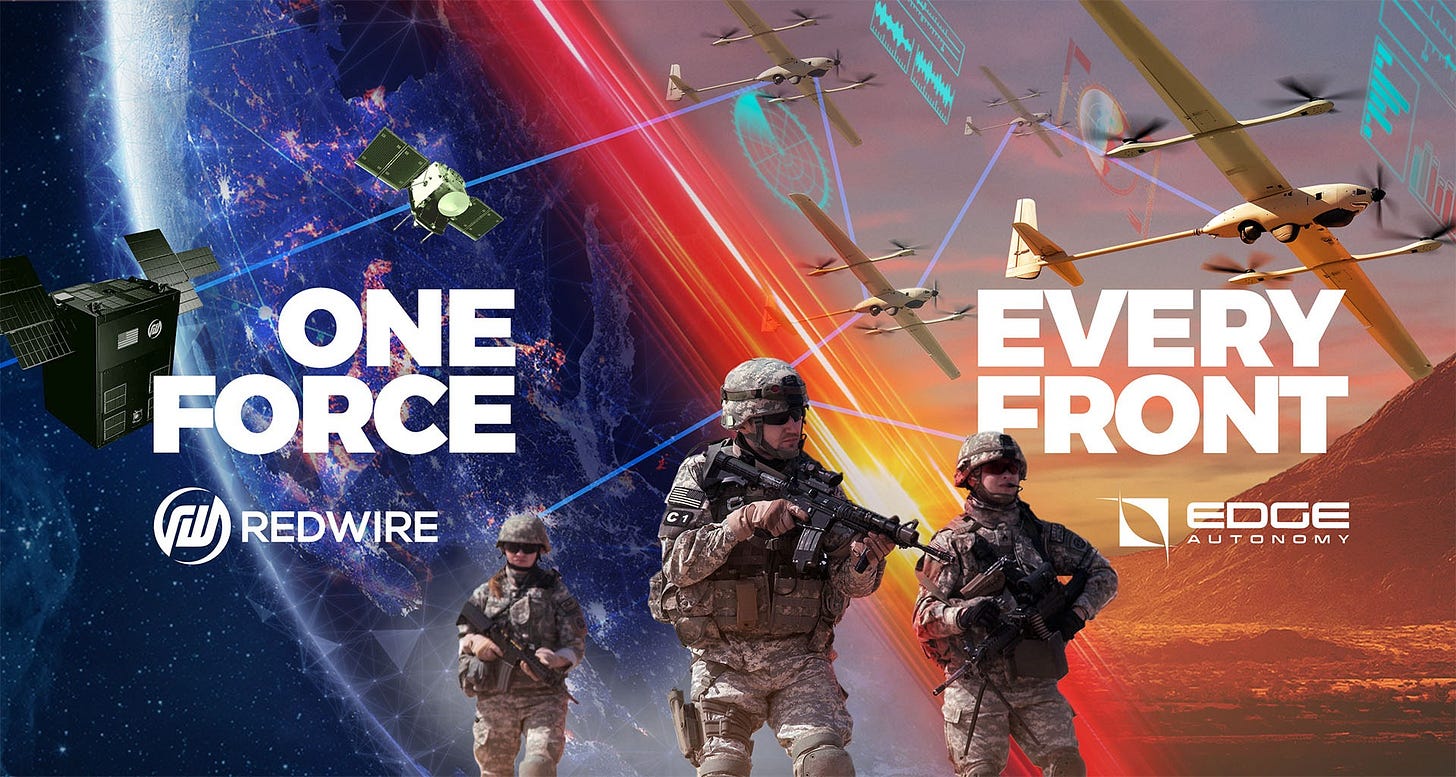NATO goes big
Last week’s NATO Summit in The Hague made it crystal-clear: allied governments are doubling down, with a historic pledge to raise defence spending to 5% of GDP by 2035. Of this, 3.5% will go toward core military requirements—equipment, munitions, readiness—while 1.5% will fund cyber defense, critical infrastructure, and industrial capacity. As NATO’s Secretary General put it, “Donald, you have driven us to a really, really important moment for America and Europe and the world.”
The UK seems to be moving fast:
It announced it will join NATO’s nuclear-sharing mission, buying 12 F-35As to carry US nuclear bombs.
It is also offering £200,000 salaries to attract top tech talent - even higher than the PM’s own salary. The goal is to overhaul public-sector systems, acknowledging that modernization is now a matter of national security.
The move responds directly to Russia’s faster-than-expected force regeneration; to illustrate the pace, Russian UAV production has surged from 400 per month last June to 4,000 per month today:
The question is: who will benefit from these larger budgets?
The Paris Air Show sent its own clear signal about American industry’s ambitions. Dozens of Senators, governors and lawmakers arrived - the largest-ever US Senate delegation - determined to lock in contracts from Europe’s coming defense boom. While Trump has threatened to reduce US security commitments, American firms see no reason to cede the market. At current scale, Europe’s industrial base might not be sufficient to meet growing demand in the short term. Restocking now means buying American.
To win the European market, US companies are still unsure of which playbook to adopt: Anduril previously failed to secure significant contracts alone and closed its London office. It is now back through a different approach and announced a partnership with local traditional prime Rheinmetall.
Back home, the US defense market continues its strong momentum
OpenAI signed its first formal US military deal: a $200 million contract to deliver AI tools to the Pentagon. On top of that, OpenAI also added former NSA Director Paul Nakasone to its board. The move underscores how quickly commercial AI players are being integrated into national security planning.
Redwire Corporation announced the $1.1bn acquisition of Edge Autonomy. Redwire, with a market cap over $2.4 billion after a 170% stock run-up this year, is positioning itself as a mid-tier consolidator. Edge Autonomy delivers autonomous systems and resilient energy solutions to defense and government agencies. The combined entity forecasts to reach $600m in revenues.
The US House advanced the “American Domination Drone Act,” aimed to to secure U.S. drone dominance by fast-tracking pilot programs for air taxis, cargo delivery, and medical response, prioritizing U.S.-made drones for military and federal use, tightening supply chain security against foreign firms, and expanding export support for American-made drones. Now that drones have become mainstream in combat, we should expect to see progressive widespread civilian deployment.
In Iran, Operation Midnight Hammer was an impressive demonstration of force from the US and its B-2 stealth bombers stole the show. But there were also 2 discrete learnings:
Israeli teams covertly deployed small drones inside Iranian territory to disable radar and air-defense systems before the main strike. The tactic mirrors Ukraine’s use of FPV drones against Russian bomber bases: low-cost, prepositioned systems that open paths for high-value strikes. The idea of secure rear areas behind frontlines is increasingly obsolete, and power grids, logistics hubs, and command centers have to be treated as vulnerable targets. Counter-drone defense will need to adapt accordingly.
The US deliberately seeded open-source channels with false signals about stealth bombers, diverting analysts toward a meaningless narrative. OSINT is both a powerful tool and a critical vulnerability: the same public channels that enable intelligence can be turned into exploitable chokepoints. In short, open-source intelligence isn’t just a risk to manage—it’s an active domain of warfare that every operation must now account for.
Fundraising
Anduril raised $2.5 billion at a $30 billion valuation led by Founders Fund, giving the company significant warchest to acquire new companies. About half of its major products come from acquisitions, including flagship autonomous air vehicle Fury.
On a similar path, Helsing secured a $700 million bridge round at a $14 billion valuation. Helsing is also starting to become more active on the M&A side and acquired Grob to expand its next-gen aerial warfare capabilities.
Applied Intuition raised $700 million at a $15 billion valuation. Originally developing autonomous software for civilian-focused cars, the company has refocused its efforts on defense. Earlier this year, it won a $171 million DoD contract for all-domain autonomy testing.
Nominal raised a $75 million Series B led by Sequoia to modernize hardware testing infrastructure.
Onebrief raised a $20 Million Series C Extension led by Battery Ventures, nearly doubling valuation in 3 months to $1.1bn . Earlier this month, the team secured a $60 million government contract to deliver a data-centric command and control system - a critical piece of a modern war planning. Something company Comand AI is working on in Europe.
Kraken received investment from the NATO Innovation Fund and the UK’s National Security Strategic Investment Fund for its autonomous surface vessels.
Also in maritime, Andrenam raised $10 million seed led by First Round for its AI-powered distributed sonar.








